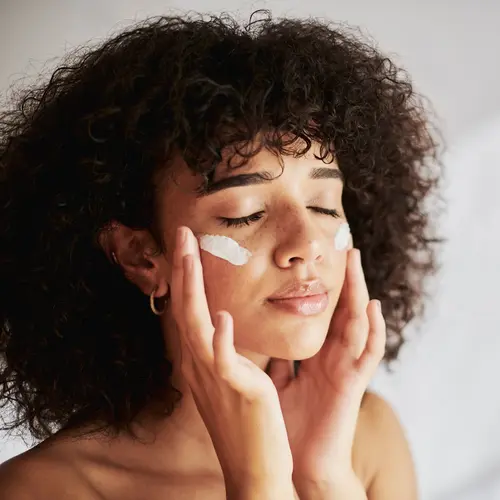While a slew of home makeup tricks can fake full lips for a short while, a growing number of women (and men) now opt to plump up their puckers long-term in the doctor's office. In fact, injectables for fine lines, wrinkles, and lips increased by 21% in 2013. One theory for the uptick in lip enhancement appointments is that these procedures are safer than ever. They also give more natural results than they once did (no more fish-face looks).
The procedures may be safe, but are they for you?
"It is not just about making lips bigger, but rather creating balance and proportion to the upper and lower lip," says Julius Few, MD, a plastic surgeon based in Chicago. "In addition, as people get older, they tend to lose definition in the lips, especially at the cupid's bow of the central upper lip and lip border."
Lip injections add volume where it's been lost most. Your goal could be anything from defining the cupid's bow and lip line to smoothing the skin on your lips.
Doctors start by cleaning the area. Then they apply a numbing gel to the lips. After 15 to 20 minutes, the lips are injected with a filler, typically made up of hyaluronic acid (the only FDA-approved substance for use in lips). The process typically takes 30 to 45 minutes from the time you walk in to when you leave. If all goes as planned, lipstick or lip gloss can go on that evening. If any issues like bumps or swelling of the lips' shape crop up, these can be massaged at your doctor's office during the first 24 hours post-procedure.
"Side effects that can occur are some swelling and bruising, and, on an extremely rare occasion, a patient can react, creating an inflammation," says Edwin F. Williams III, MD, president-elect of the American Academy of Facial Plastic and Reconstructive Surgery.
Any trained doctor (and some professional nurses) can give lip injections. Still, facial plastic surgeons and dermatologists have a more complex knowledge about the anatomy of the lips and the aging process, which could mean the difference between a good lip-job and a great one. "If the filler is overdone, adding too much volume, then the movement of the lip can be distorted," says Edward H. Farrior, MD, a plastic surgeon in Tampa, FL.
Even though permanent silicone injections are FDA-approved for use in other parts of the face and body, they are not approved for the lips. Steer clear of a doctor who recommends them -- there is potential for lumps, bumps, unevenness, and other problems.
The average cost of lip injections (with hyaluronic acid) is $600, and most treatments done by professionals last about 1 year. But some people can see 2 to 3 years of desired fullness and correction, according to Williams.
If you decide to plump your pout, remember that lips come in many different shapes and sizes, and no one-size-fits-all kisser exists, so your results may not look like someone else's.
Find more articles, browse back issues, and read the current issue of "WebMD Magazine."

